
CLOSING TIME



SALOONS, TAVERNS, DIVES, AND
WATERING HOLES OF THE TWIN CITIES

BILL LINDEKE and ANDY STURDEVANT

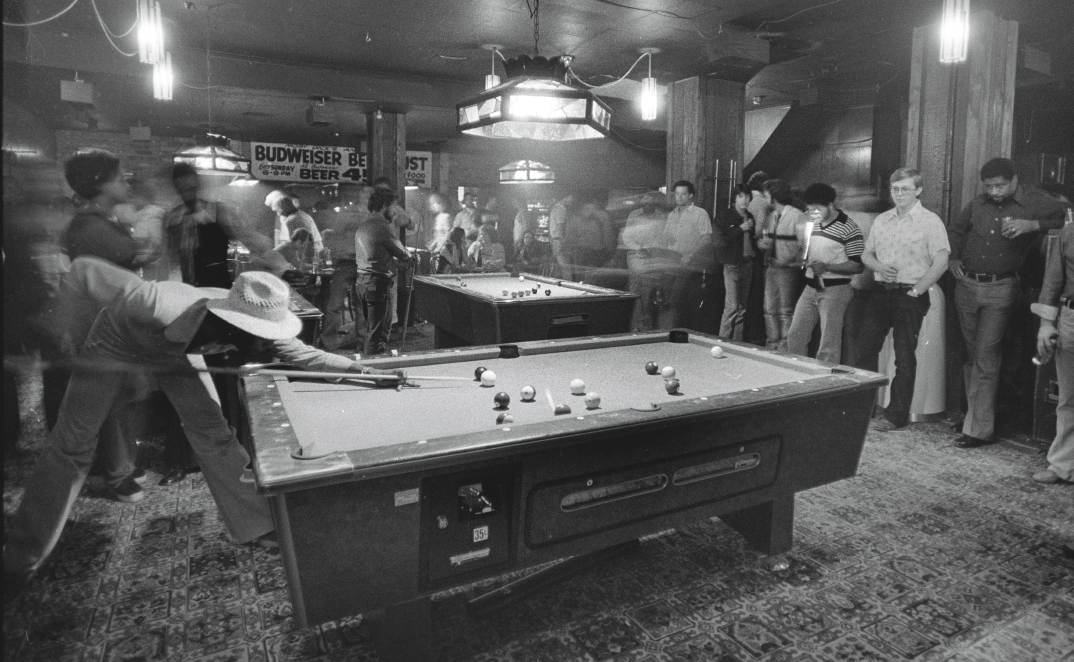
Text copyright 2019 by Bill Lindeke and Andy Sturdevant. Photo and illustration copyrights as indicated with image captions. Other materials copyright 2019 by the Minnesota Historical Society. All rights reserved. No part of this book may be used or reproduced in any manner whatsoever without written permission except in the case of brief quotations embodied in critical articles and reviews. For information, write to the Minnesota Historical Society Press, 345 Kellogg Blvd. W., St. Paul, MN 551021906.
mnhspress.org
The Minnesota Historical Society Press is a member of the Association of University Presses.
Manufactured in the United States of America
10 9 8 7 6 5 4 3 2 1
 The paper used in this publication meets the minimum requirements of the American National Standard for Information SciencesPermanence for Printed Library Materials, ANSI Z39.481984.
The paper used in this publication meets the minimum requirements of the American National Standard for Information SciencesPermanence for Printed Library Materials, ANSI Z39.481984.
International Standard Book Number
ISBN: 978-1-68134-137-8 (hardcover)
ISBN: 978-1-68134-144-6 (e-book)
Library of Congress Cataloging-in-Publication Data
Names: Lindeke, Bill, author. | Sturdevant, Andy, author.
Title: Closing time : saloons, taverns, dives, and watering holes of the Twin Cities / Bill Lindeke and Andy Sturdevant.
Description: Saint Paul, MN : Minnesota Historical Society Press, [2019] | Includes bibliographical references and index. | Summary: In Closing Time, Bill Lindeke and Andy Sturdevant dive into tales from famous and infamous drinking establishments from throughout Twin Cities history. Readers are led on a multigenerational pub crawl through speakeasies, tied houses, rathskellers, cocktail lounges, gin mills, fern bars, social clubs, singles bars, gastropubs, and dives. Featuring beloved bars like Matts, Palmers, the Payne Reliever, and Moby Dicks, the book also resurrects memories of long-forgotten establishments cherished in their day. Lindeke and Sturdevant highlight neighborhood dives, downtown nightspots, and out-of-the-way hideaways, many of which continue to thrive today. Closing Time brings together stories of these spaces and the people who frequented themProvided by publisher.
Identifiers: LCCN 2019028849 | ISBN 9781681341378 (hardcover) | ISBN 9781681341446 (ebook)
Subjects: LCSH: Bars (Drinking establishments)MinnesotaMinneapolis Metropolitan AreaHistory. | Bars (Drinking establishments)MinnesotaSaint Paul Metropolitan AreaHistory. | Minneapolis (Minn.)History. | Saint Paul (Minn.)History.
Classification: LCC TX950.57.M6 L56 2019 | DDC 647.95776/579dc23
LC record available at https://lccn.loc.gov/2019028849
This and other Minnesota Historical Society Press books are available from popular e-book vendors.
On the previous pages: Interior of Moby Dicks, on Block E in downtown Minneapolis, 1978. Photo from the Star Tribune, Minnesota Historical Society Collections
CONTENTS
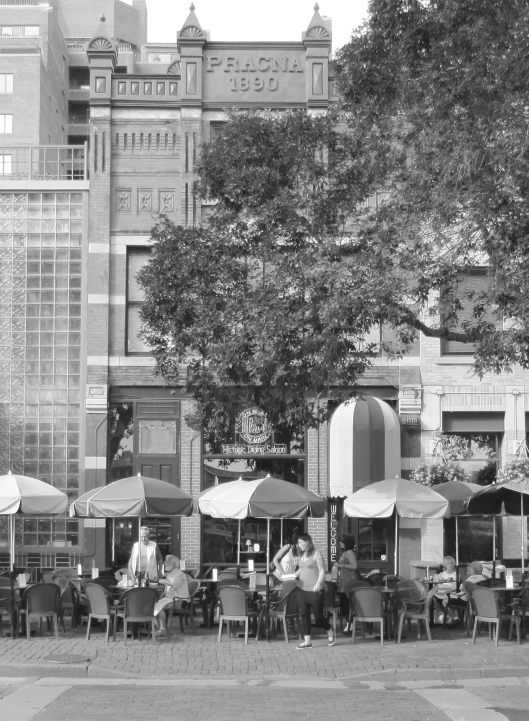
Pracna sits in an 1890 building on St. Anthony Main, evoking an old-school saloon in twenty-first-century Minneapolis. Photo by Ed Kohler, CC-BY-SA-2.0
INTRODUCTION
The two of us met, in a bar, about ten years ago. It was Pracna, on St. Anthony Main across the river from downtown Minneapolis. Pracna is a beautiful old saloon in a historic stone building that bears the words Pracna 1890 on its crown. We dont remember what we had to drink: Bill probably had a beer; Andy probably had a cocktail.
Pracna is one of those places that people like to tell you is the oldest saloon in town, possibly because they read it on a menu while waiting for their order. Its not untrue, exactly, but there are a lot of asterisks. Frank Pracna did open a saloon on the site in 1884 and constructed the present-day building six years later. So, in one sense, to have a drink at Pracna today is to imbibe in a space that dates back more than a century, and it certainly feels that way. But Pracnas original bar closed sometime in the 1930s, and it was only reopened again in the 1970s, by an unrelated set of entrepreneurs. The new bars main selling point was the restored nineteenth-century building, and todays Pracna reflects a sort of manufactured nostalgiaalthough it feels right if you sit with it for a while. The proximity to downtown ensures that its frequently full of young professionals and visitors to the city, all eager for some local Minneapolis lore. In its 130-year-old building, Pracna is an extension of old Minneapolis, experienced through the masonry and the wood fixtures and the way you can hear nearby St. Anthony Falls if youre sitting on the patio.
Plenty of joints in this book have been continuously serving alcohol since the days when Frank Pracna was behind the bar on Main StreetCuzzys Bar on Washington Avenue, for example, or the Spot Bar in St. Paul, though in both cases the names have been changed many times over. Waldmanns Saloon dates back to territorial days, though it had a 140-year interruption of service. And there are a handful of Pracna-era places scattered around the Twin Cities that didnt make it into this book: Neumanns, Brunsons, the Monte Carlo, the Schooner, Whiteys, Joe and Stans. Its not because we dont love them, but theres only so much room.
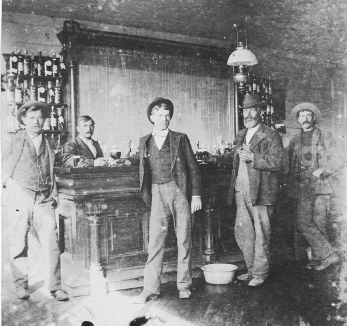
Patrons at a saloon on West Seventh Street in St. Paul, circa 1900. Minnesota Historical Society Collections
At the same time, new bars are constantly opening around town, in spaces new and old, including trendy joints in recently gentrified areas as well as classic neighborhood corner bars. Many of these notable newer bars of the last fifteen or so years, sadly, didnt make the book, either (or, in a few cases, closed before the book went to press): Marvel Bar, La Belle Vie, the Pi Bar, Parlour, the Bulls Horn, the Rabbit Hole, the 331, others.
Each bar in the Twin Cities, or anywhere for that matter, has its own story, and each one has stories that we tell about it. Yet the rich history of our bars, saloons, taverns, and clubs doesnt always fit neatly into the larger picture we like to paint of Minneapolis and St. Paul: cities where urban bustle is tempered by nature and livability; where downtown density is offset by ample lakes, trees, and parks; where the raw edges of industry are diluted by bourgeois civility. Still, for nearly two centuries, thousands of bars have thrived amidst the enclaves of respectability in the downtowns, neighborhoods, and fringes of MinneapolisSt. Paul. This tension over urban identity has been played out in the many regulations, restrictions, and crackdowns that punctuate the story of Twin Cities booze, and bars so often mark the edges and intersections of race and class, identity and geography.
Next page
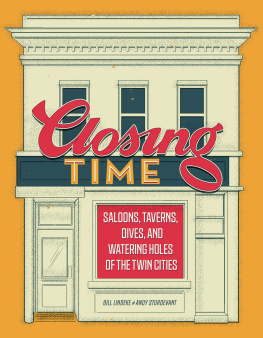

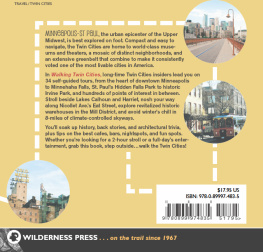
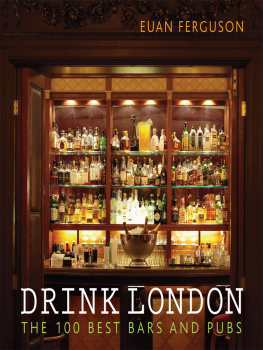


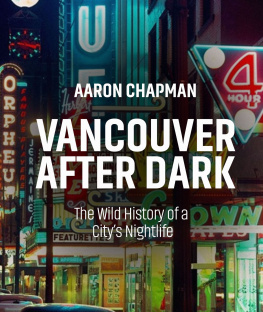

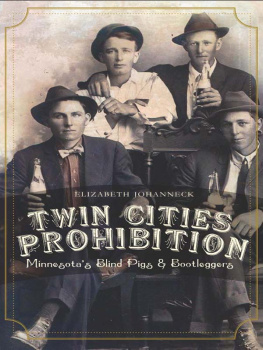







 The paper used in this publication meets the minimum requirements of the American National Standard for Information SciencesPermanence for Printed Library Materials, ANSI Z39.481984.
The paper used in this publication meets the minimum requirements of the American National Standard for Information SciencesPermanence for Printed Library Materials, ANSI Z39.481984.
